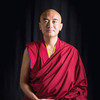Natural Garden Home - Ayutthaya Accommodation
TONJIRAPHONG27
Wat Phra Ram
Mintymin
Wat Phra Si Sanphet.
Tak Review
Wat Yai Chaimongkol
NomadicHarmony
CentaraAyutthaya
Happy Trippp
Roy Jaran's Garden Home.
EightyNine
Sanoh at Ayutthaya
EightyNine
Nature Coffee In The Garden
EightyNine
Popular Trip Moments
Wat Phra Ram | Wat Phra Si Sanphet. | 🌟Wat Yai Chai Mongkol: A Gateway to History and Serenity | ⏳Journey Through Time: Exploring the Enchanting Ayutthaya Historical Park 🤩 | Wat Phanan Choeng Worawihan | Exploring Wat Mahathat Yuwaratrangsarit 🇹🇭 | The underrated hidden gems around Bangkok for tourism | Wat Yai Chaimongkol | CentaraAyutthaya | Roy Jaran's Garden Home. | Sanoh at Ayutthaya | Nature Coffee In The Garden | Sala Ayuthya | Wat Phutthaisawan | Evening prayers at the temple. | Old city- Ayutthaya | Wat Yai Chai Mongkhon. | Banta Cafe Ayutthaya | Wat Borom Phuttharam | summer cafe | Tour of Ayutthaya Chaiwatthanaram Temple | I experienced a 50 yuan golden Thai costume styling in Ayutthaya! | Sighting Miracle Nature Buddha Statue Tree | Boran Temple | Exploring the History and Culture of Thailand - A Travel Guide to the Ayutthaya Historical Park in Bangkok | Bangkok | Ayutthaya World Heritage | 500 years the royal temple of Auyyuthaya | Discovering Ayutthaya’s Ancient Grandeur | Traveling to Ayutthaya with Lisa | The Splendid Centennial of Ayutthaya, Thailand|Come here to understand the history of Thailand
Popular Travel Types
Recommended Attractions at Popular Destinations
Bangkok attraction near me | Tokyo attraction near me | Manila attraction near me | Hong Kong attraction near me | Seoul attraction near me | Taipei attraction near me | Los Angeles attraction near me | New York attraction near me | Shanghai attraction near me | Kuala Lumpur attraction near me | Shenzhen attraction near me | Osaka attraction near me | London attraction near me | Singapore attraction near me | Guangzhou attraction near me | San Francisco attraction near me | Beijing attraction near me | Macau attraction near me | Bali attraction near me | Paris attraction near me | Ho Chi Minh City attraction near me | Orlando attraction near me | Jakarta attraction near me | Chicago attraction near me | Phuket attraction near me | Toronto attraction near me | Dallas attraction near me | Istanbul attraction near me | Seattle attraction near me | Cebu attraction near me
Popular Attractions
Mount Huangshan | Milford Sound Scenic Cruises | Christchurch Transitional Cathedral | Blue Tree Phuket | Cloud Forest | Sant Miquel de Vespella | Tioman Island | Nui Beach | Addis Ababa Gotera Masalecha | Chao Phraya River | Redwoods Treewalk | Kuta | Natural History Museum | Rainbow's End | Zhanqiao Pier | Mao Mountain | Nanshan | Study Shala Gorakhpur | Zhongshan Park | Riffle Run Recreation Area | Masjid Jamik Darul Huda | Wooden Valley Winery | Bare Island Fort | Stade De Football | Chulabhorn Dam Public Park | Vedanthangal Bird Sanctuary | Church of Saint Mary 'della Speranza' | Delaware Park | Estadio San Lorenzo | Yungu Cableway
Popular Restaurants in Phra Nakhon Si Ayutthaya
Baan kao Nhom | Blue River Ayutthaya | Ban Mai Rim Nam | Busaba Cafe' | Raan Tha Luang Restaurant | Shogun Steakhouse & Japanese Food | Coffee Old City | Say Cafe and gallery | Busaba Cafe & Meal | Malakor Kitchen and cafe | Earl Thai Restaurant | The Seven Seas Restaurant/pub | The Summer House Ayutthaya | Ayutthaya Heritage | Street Lamp Bar & Restaurant | Chang House | Sai Thong Restaurant | Fuji Restaurant - Tesco Lotus Ayutthaya | Phae Krung Kao | Hua Raw Night Market | Ban Watcharachai | Kampu Ayothaya | Phrakhun House Ayutthaya | Planet Earth Bar & Restaurant | Tony's Place | Number One Cafe & Restaurant | So Sweet | Col One Love Restaurant | The Jim's cafe | Isaan Story
Payment Methods
Our Partners
Copyright © 2024 Trip.com Travel Singapore Pte. Ltd. All rights reserved
Site Operator: Trip.com Travel Singapore Pte. Ltd.
Site Operator: Trip.com Travel Singapore Pte. Ltd.



















